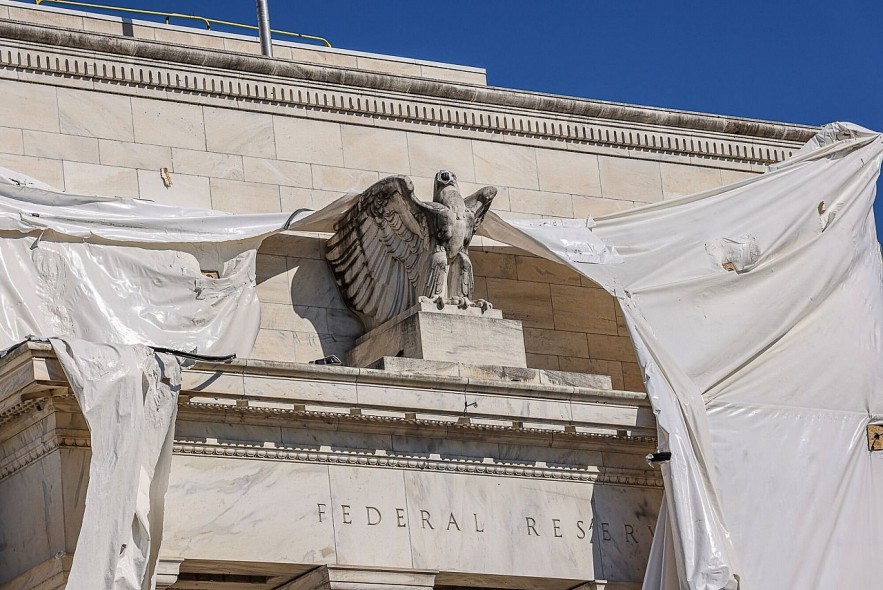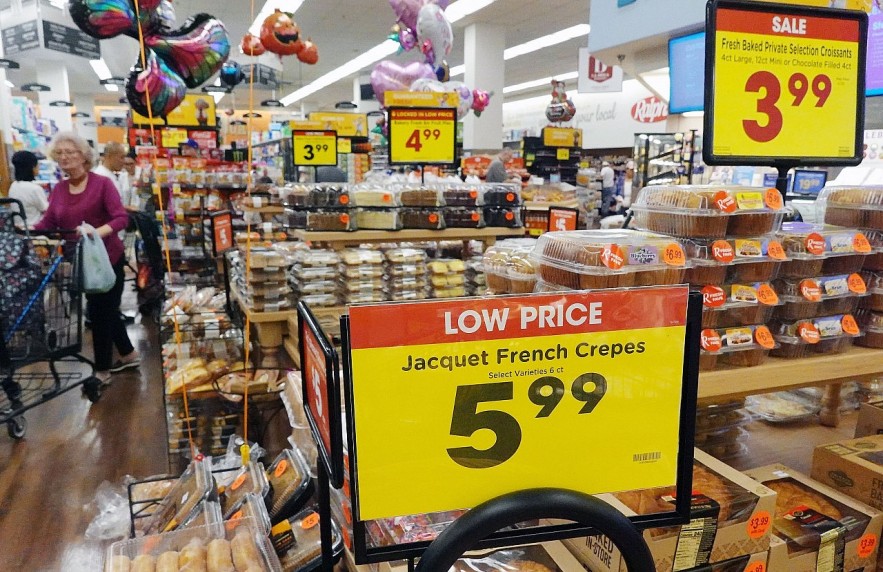(TBTCO) – US Federal Reserve (FED) officials may present all interest rate options at this week’s meeting, even if inflation data progresses as planned. At 2 p.m. on Wednesday (December 13, US time), when Mr. Jerome H. Powell – Chairman of the Fed speaks at the press conference after the meeting ends, investors and many Americans will gather. much on one question: When will the FED start cutting interest rates?
 |
| Falling inflation could allow the Fed to consider whether and when to cut interest rates. Photo: Bloomberg |
| The FED is under pressure to come up with a plan to cut interest rates next week |
Era of “uncertainty”
Fed policymakers sharply increased borrowing costs from March 2022 to July 2023, from 0% to about 5.25 to 5.5%, the highest level in 22 years, in an effort to control Control inflation quickly by cooling the economy. They have paused since then, waiting to see how the economy responds.
But with inflation moderating and the job market growing at a more modest pace, Wall Street is increasingly expecting the Fed could start cutting interest rates soon — perhaps even within three months. first month of 2024.
|
In the 1970s, then-Fed Chairman Arthur Burns failed in his fight against rampant inflation – in part because the central bank loosened monetary policy too soon to stem unemployment. higher. The next Fed Chairman, Paul Volcker, chose to tame soaring prices by raising interest rates so high that they caused a painful recession in the early 1980s. But as price pressures have gradually subsided, Mr. Powell, the current Fed Chairman, will face the prospect of how to achieve a goal that his predecessors could not: reduce inflation without causing large fluctuations in unemployment. |
Fed officials have been hesitant to say when that might happen, or even promise that they will complete the rate hike. That’s because they are still worried that the economy may recover or the process of curbing inflation may stall. Policymakers do not want to declare victory only to have to back down if inflation returns or falls short of target.
Economists say Mr. Powell will likely take a non-committal stance on interest rates this week because of all the uncertainty. After Wednesday’s decision, Fed officials will release a new Quarterly Summary of Economic Forecasts, giving their view on where interest rates are expected to be at the end of 2024, as well as whether they will cut How many times will interest rates be reduced, if any?
But, both the Fed’s forecast and Wall Street’s expectations may hide a clear reality: There are many possible outcomes for interest rates next year, depending on what happens in the economy. US economy in the next few months.
“We are at the peak of uncertainty,” said Michael Gapen, Chief Economist at Bank of America. Mr. Gapen also expressed his personal opinion when he commented that this week there will be no surprises: the FED will probably keep interest rates stable and their options are always open. But over the next year, he and other economists say, there are three possible scenarios – each of which could dictate a very different policy.
Scenario 1: The economy declines deepening and lower interest rates will soon appear
Interest rates have weighed on the housing market, discouraging consumers from making large purchases with borrowed money, making business expansion less attractive in recent months, and the effects could start to grow. go up.
If the economy slows significantly in late 2023 and early 2024, that could push the Fed to lower interest rates sooner to avoid slowing growth so sharply that the economy falls into recession.
Mr. Gapen said that if employers cut jobs in December, the Fed could lower interest rates as early as early 2024. He said this would be an “easy” scenario for the FED: Clearly Obviously interest rates need to be reduced.
But, that’s not what most economists expected.
 |
| Lower price pressure has eased the Fed’s concerns about consumer and business inflation expectations. Photo: Getty Images |
Scenario 2: Inflation continues to cool down but economic growth momentum is still maintained
Most forecasters say the economy may continue to grow later this year and in the following years, but more slowly than in recent quarters. A gradual cooling will help inflation continue to moderate.
In such a scenario, the important question for the Fed will be when to cut interest rates and why? Does it make sense to reduce borrowing costs just because inflation is falling, even if economic data remains fundamentally stable?
| The current economic cycle is unlike any the Fed has faced in half a century, so Mr. Powell has no historical lessons to refer to for his upcoming decisions. During most rate hikes over the past 35 years, the Fed has sought to prevent inflation from rising higher, not lower it. |
Fed officials including New York Fed President John C. Williams and Fed Governor Christopher Waller have suggested that could happen. The logic is quite simple: Interest rates are not adjusted for inflation, so as inflation falls, interest rates can begin to weigh more heavily on the economy in adjusted terms.
“If we see deflation continuing,” Mr. Waller said at an event on November 28, “and if we feel confident that inflation has actually come down then we can start to lower it.” policy interest rate because of lower inflation.”
The question is when. Mr. Waller said it could take several months if the situation remains stable for officials to feel comfortable.
Scenario 3: Inflation slows down or the economy heats up againor both
This is the worst scenario. Economists have regularly been surprised by the staying power of both economic data and price increases since 2021, and that could happen again.
If the economy and inflation run hotter than expected, the solution will be simple. Officials will likely need to raise interest rates more as they have repeatedly expressed their willingness to do so.
But more complicated scenarios are possible. For example, the economy could recover even as inflation cools, creating the threat that strong demand will push up prices. “I think they will be more reluctant” to cut interest rates in that case, said Michael Feroli, chief economist at JP Morgan.
Or, the process of reducing inflation could stall even as the economy weakens, forcing the Fed to weigh the risk of economic recession and permanently high inflation.
All of these expected scenarios can help explain why the Federal Open Market Committee (FOMC), the Fed’s policy-setting body, is trying to keep its options open.
Mr. Powell said in his December 1 speech: “We have gone too fast and the FOMC is moving forward carefully.”/.
